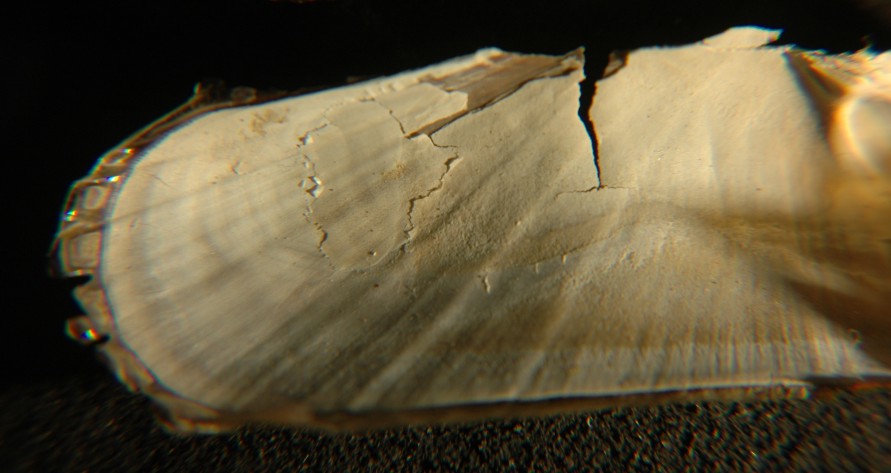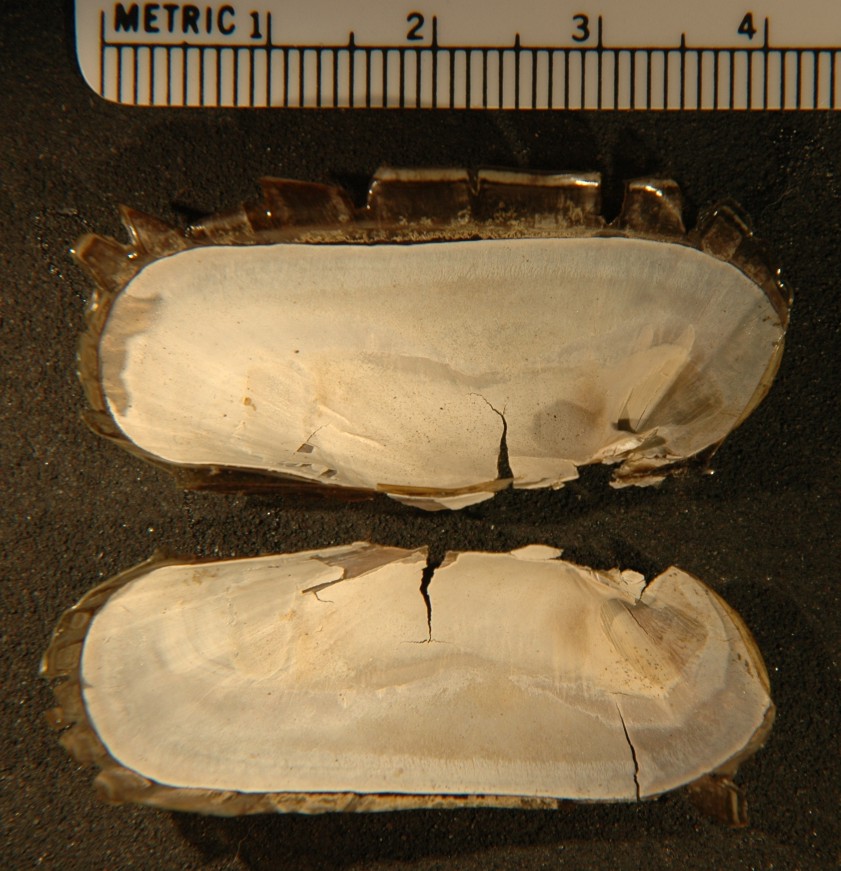How to Distinguish from Similar Species: This clam is distinctive.
Geographical Range:
Depth Range: Shallow subtidal
Habitat: Sediments high in organics and low in oxygen, such as sewage outfalls and near pulp mills.
Biology/Natural History: Makes U-shaped burrows in the mud, especially in areas such as sewage outfalls and areas with abundant woody debris which are highly enriched in organics, low in oxygen, and high in hydrogen sulfide. The clam above was harvested from the Hyperion sewage outfall off Los Angeles, CA at a depth of about 100 m before sewage treatment inproved there. These clams harbor symbiotic sulfide-oxidizing bacteria in their gills which chemosynthetically derive energy from this reaction. The tissue of freshly collected clams often appears yellow because of the buildup of elemental sulfur. The gut is highly reduced or entirely absent. They may also obtain nutrition by absorbing dissolved organic material from the water.
Solemya is one of a group of "primitive" "Protobranch" bivalves which are different structurally from other bivalves. Most protobranchs live with the anterior end down in sediment. They have two small, bipectinate gills on the posterior end. Water is circulated from the anterior end toward the posterior end and across the gills, rather than in at the posterior ventral end, across the gills, and out at the posterior dorsal end as in most clams. The protobranchs usually have long extensions of the mouth called labial palps, which they extend into the sediment and pick up particles for feeding. (Solemya is different from other protobranchs in several respects--it does not have the long labial palps and gets its nutrition primarily from its symbiotic bacteria.) Some Protobranchs, including Solemya, also have a small flattened "sole" on their foot. The sole has left and right halves which can be folded together to collapse the foot into a narrow profile. The foot is then inserted into the sediment, the sole is unfolded to its wide configuration, and the foot is retracted to draw the clam down into the sediment. Solemya can completely bury itself with two thrusts of the foot in this manner.
Members of Subclass Cryptodonta have thin, equal valves
which are elongated and have no hinge teeth, plus protobranchiate (bipenctinate)
gills. The anterior
adductor muscle is larger than the posterior, and the periostracum overhangs
the edge of the shell.
| Return to: | |||
| Main Page | Alphabetic Index | Systematic Index | Glossary |
References:
Dichotomous Keys:Carlton, 2007
Kozloff 1987, 1996
Scott and Blake, 1998
General References:
Harbo,
1997
Scientific Articles:
Web sites:
General Notes and Observations: Locations,
abundances, unusual behaviors:
The shell is brittle and easily cracked. The periostracum
broadly overlaps all the free the shell margins. The hinge
has no teeth.
| Views of the inside of the right valve under low-angle light shows the sculpturing inside the valve | |
 |
 |
| The anterior end of the valve has some faint radial ribs on the inside, running from the hinge area to the ventral margin even through the adductor muscle scar. | The posterior end of the valve is generally smoother but has a stronger radial rib running just anterior (to the left of) the posterior adductor muscle scar. |
Authors and Editors of Page:
Dave Cowles (2007): Created original page
CSS coding for page developed by Jonathan Cowles (2007)

